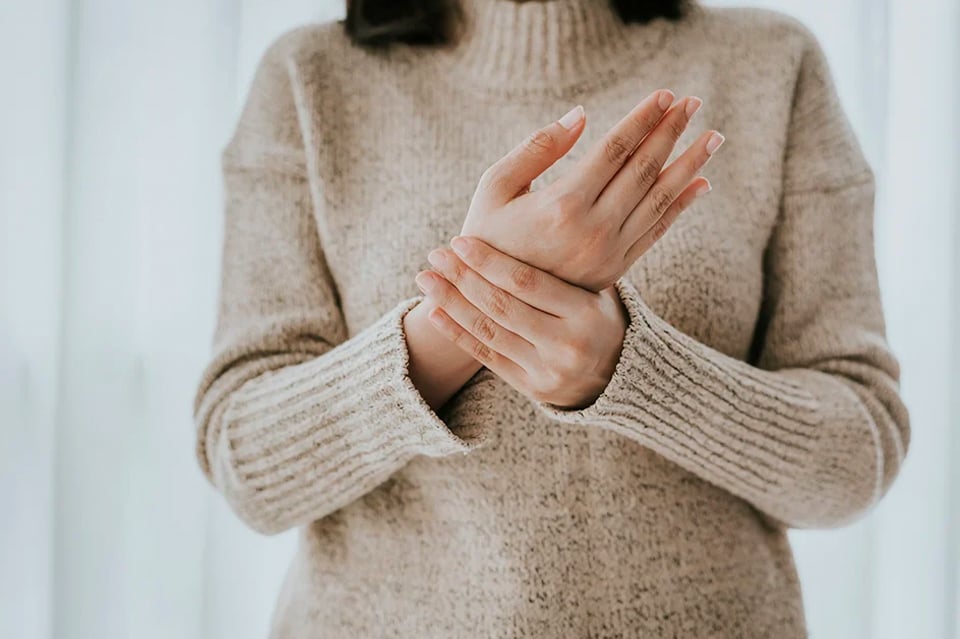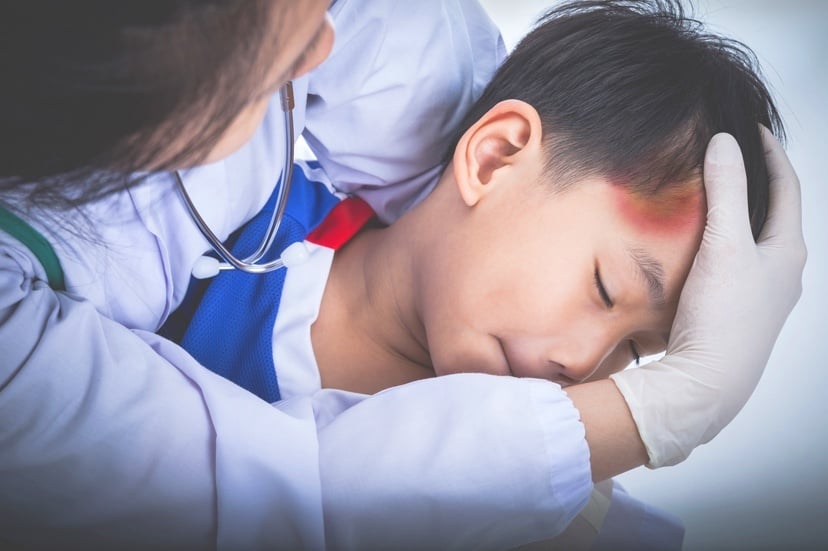
Your hand is an important tool you use in your everyday life. If you experience any unexplained and/or prolonged pain, it should be taken seriously.
There are several reasons you may be experiencing pain in various parts of your hand, including:
Arthritis
Fifty-four million adults in the U.S. are challenged from arthritis, according to the Centers for Disease Control & Prevention (CDC). Arthritis is the swelling and tenderness of your joint(s). It can affect one or more of the many joints located in your hand. Each finger has three joints—at the base, middle, and fingertip—and each thumb has two. The wrist is made up of multiple joints.
The two main kinds of arthritis are osteoarthritis and rheumatoid arthritis. If you have the former, your joints are damaged by the natural wear and tear that comes with age. For those with rheumatoid arthritis, the immune system attacks the joint capsule lining, causing inflammation.
Symptoms of arthritis may include:
- Joint Pain
- Stiffness
- Swelling
- Redness
- Decreased Range of Motion
- Fatigue (Rheumatoid)
- Loss of Appetite (Rheumatoid)
Carpal Tunnel Syndrome
Carpal tunnel syndrome (CTS) occurs when pressure is exerted to the median nerve, which runs from the forearm into the palm of your hand, and causes a strain or pain to the palm side of the thumb and index, middle, and areas of the ring finger. This strain can be caused by a combination of factors including trauma or injury (sprains or fractures), an overactive pituitary gland, an under-active thyroid gland, rheumatoid arthritis, development of a cyst or tumor, fluid retention, and more.
Those with CTS—3 to 6 percent of adults in the general population—may experience:
- Tingling, Numbness or Pain in the Hands or Fingers (Thumb, Index, Middle, or Ring Finger)
- Wrist Pain
- Pain That Travels up the Arm
- Weakness in the Hands
- Dropping of Objects
Ganglion Cysts
A noncancerous lump that develops along tendons or joints in your hands and wrists, ganglion cysts account for 60 to 70 percent of soft-tissue masses found in the hand or wrist. Pain can occur if the cyst interferes with joint movement or presses on a nerve. There is no known cause of this cyst, which is filled with fluid. Those between the ages of 20 and 40, with osteoarthritis, or a joint or tendon injury, have increased risks of ganglion cysts.
Symptoms include:
- Round or Oval Lump up to 2.5 Centimeters in Size
- Pain
- Tingling
- Numbness
- Muscle Weakness
De Quervain’s Tenosynovitis
De Quervain’s tenosynovitis is a common entrapment tendinitis of the hand and wrist. This painful condition affects the tendons and thumb side of your wrist, making it hurt when turning your wrist, grasping, or making a fist, according to nonprofit research, education, and clinical practice the Mayo Clinic.
Although the cause is unknown, there are multiple risk factors associated with De Quervain’s tenosynovitis. Women between the ages of 30 and 50, who are pregnant, or have jobs or hobbies that require repetitive hand and wrist motions, are at higher risk.
Symptoms of De Quervain’s tenosynovitis include:
- Pain or Swelling at Base of Thumb
- Difficulty Moving Thumb or Wrist
Trigger Finger
When a finger experiences pain, stiffness, and a locking feeling, it’s known as stenosing tenosynovitis, more commonly referred to as trigger finger. When this occurs in the thumb, it’s called trigger thumb. This condition occurs in 2 percent of the general population, and is up to six times more prevalent in females than males.
Other signs of trigger finger include:
- Popping or Clicking When Moving Your Finger
- Bump in Palm at Base of Finger
- Tenderness
Symptoms are caused by swelling that diminishes the covering surrounding the tendon in the affected finger, leading to inflammation and irritation. They can worsen if you continue hobbies that require repetitive gripping.
Joint Dislocation
Your hand pain can also come from joint dislocation, which is the separation of the two bones at a joint. This is caused by a trauma or injury such as a fall, hard blow to the joint, or motor vehicle accident.
Symptoms of a joint dislocation include:
- Finger Visibly Deformed or Out of Place
- Discoloration
- Swelling
- Pain
- Difficulty Moving Finger or Hand
Treating Hand Pain
In addition to ongoing discomfort, hand pain can affect your overall ability to accomplish daily tasks. While surgery may be an effective solution for some, often, even individuals who have received surgery follow up with alternative care to continue the healing process.
The Northport Wellness Center’s Advanced Spine and Joint Recovery Program is designed to give you every opportunity to achieve healing and recovery. We offer effective treatment modalities to address your condition while accommodating your unique health care needs and goals. We will collaborate with your current health care providers so that you may receive the most effective care, leaving no stone unturned.
At the Northport Wellness Center, our mission is: to direct people to the realization that life and healing come from within and that ultimately, the promotion and maintenance of health is superior to the treatment of disease.
Our practitioners are committed to assisting you in achieving your health and wellness goals, whatever they may be—we are here to support you on your journey.












